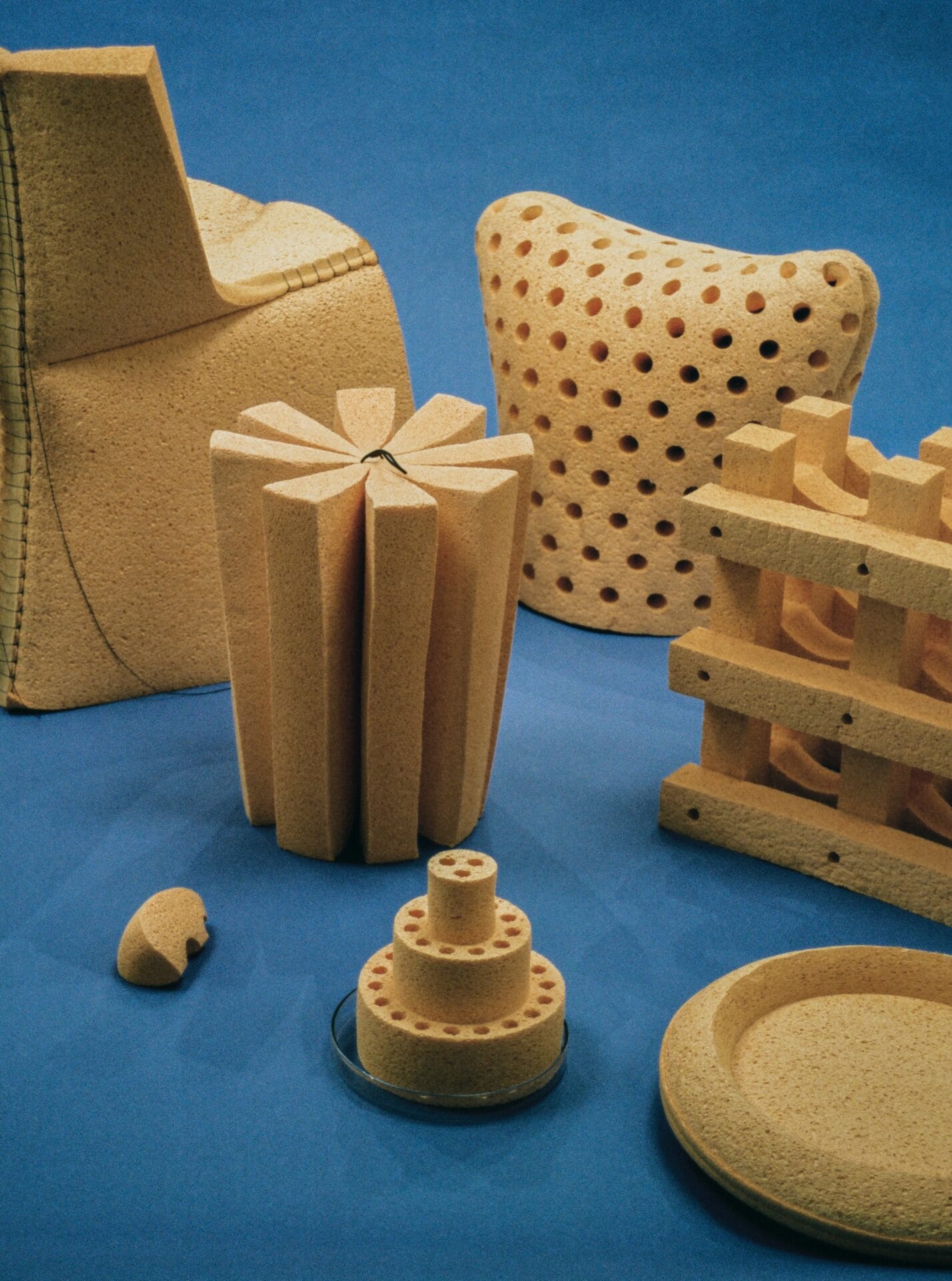This post was originally published on Colossal
Photo by Jasmine Deporta. All images courtesy of ÉCAL, shared with permission
A team of industrial designers prototyped a furniture collection that dramatically transforms from flat sheets into fully functional objects, no tools required.
Taking Gaetano Pesce’s spectacular “Up 5” chair as a starting point, Under Pressure Solutions (UPS) is an experimental research project helmed by industrial designers and ÉCAL teachers Camille Blin, Christophe Guberan, Anthony Guex, Chris Kabel, and Julie Richoz. The team recognized the rampant demand for online commerce and subsequent shipping processes that, for furniture, was often cumbersome, expensive, and wasteful given the size and bulk of the products.
As an alternative, they produced a line of stools, chairs, wine racks, and more from cellulose sponge that can be squashed and dried flat, sometimes small enough to fit into a regular envelope. The biodegradable material activates with water and expands ten times its size. Once dry, it hardens into its final form and is more durable than other plastic-based foams. As the furniture bows or dips with use, a spray of water allows the material to spring back to a more robust position.
UPS departs from the particle board and plastics often seen at big box stores. During a two-year research process, the designers tested 56 materials before settling on cellulose sponge made with vegetal fibers, sodium sulphate crystals, softeners, and wood pulp. After various manufacturing and sustainability tests, the team produced 16 unique objects from pendant lights and shelves to chairs and coffee table bases.
The project was recently on view for Milan Design Week, and you can learn more about making process on the UPS site.

Photo by Younes Klouche

Photo by Younes Klouche

Photo by Jasmine Deporta

Photo by Jasmine Deporta

Photo by Jasmine Deporta

Photo by Jasmine Deporta

Photo by Jasmine Deporta
Do stories and artists like this matter to you? Become a Colossal Member today and support independent arts publishing for as little as $5 per month. The article Just Add Water: Grow Your Own Furniture with These Pop-Up Sponge Designs appeared first on Colossal.





0 Comments